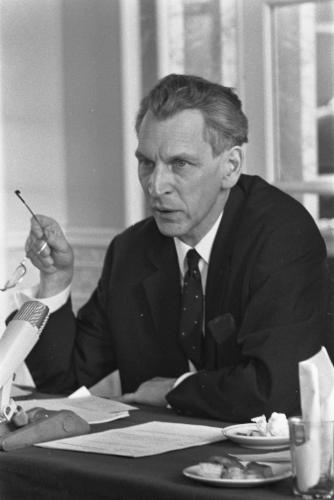Symfonische Muziek op. 59
By Marius Flothuis
Details
For large orchestra
Allegro
Adagio molto espressivo, un poco strascinante
Allegro agitato
Andante maestoso
Commissioned by Gemeente Amsterdam
Program note: The work has four movements, which have been grouped together two by two; after the second movement a short interruption follows. a. Allegro. The first movement has the character of a scherzo with a trio. The scherzo has been composed more or less as an uninterrupted crescendo. The trio brings to some extend some repose, although in the background the long string melody are set against motives from the scherzo. The reprise from the scherzo moves analogously to the exposition but starts on a different dynamic plan (piano instead of pianissimo); the instrumentation has been extended. At the peak, horns, trumpets and trombones sound their admonishing voice, then following a short passage, in which the timpani come to the forefront: b. Adagio molto expressivo, un poco strascinante, three-part sorrowful music, with which the first level is concluded. Thematically related to the beginning of: c. Allegro agitato. This part is of a violent and nervous character. The set-up is in five parts, of the five sections only the second passes rapidly, the fourth section is however a very comprehensive episode, the third and fifth sections are modified recurrences of the first. At the end of the fifth a pinnacle is reached, and the timpani are heard in solo, this time however to make way for the: d. Andante maestoso, passacaglia in which the inner balance is recovered. Cellos and double basses play the basis of the passacaglia-theme that afterwards is introduced by two harps, flute and bass clarinet. The seven variations that follow change only very little in the harmonious structure of the theme, all the more on the other hand to the melodic lines, whereas a separate instrumentation is made for each variation. A short coda ends the work in a positive sense. - MARIUS FLOTHUIS
Amsterdam
First performance
Jun 18, 1958 Amsterdam - Concertgebouworkest under the direction of Eduard van Beinum


